Southwest Michigan field crops update – June 6, 2024
Sidedress nitrogen applications began in earnest. Slugs caused severe damage in some no-till soybean fields, leading to replanting of those fields.

Weather
This past week started off cooler and became warmer, and the next week will follow that same pattern. We can expect cool weather leading up to and through the weekend. More scattered rainfall is predicted, much like this past week, resulting in “nuisance showers” that don’t provide much precipitation but make it just difficult enough to get into the field. The longer-term forecast predicts the rest of June to be warmer than normal.
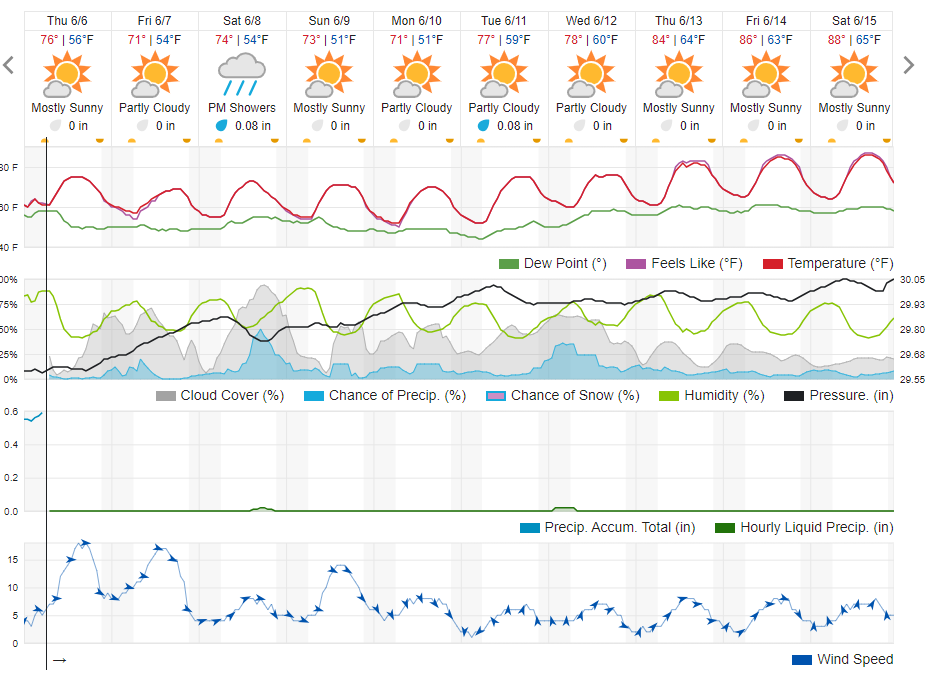
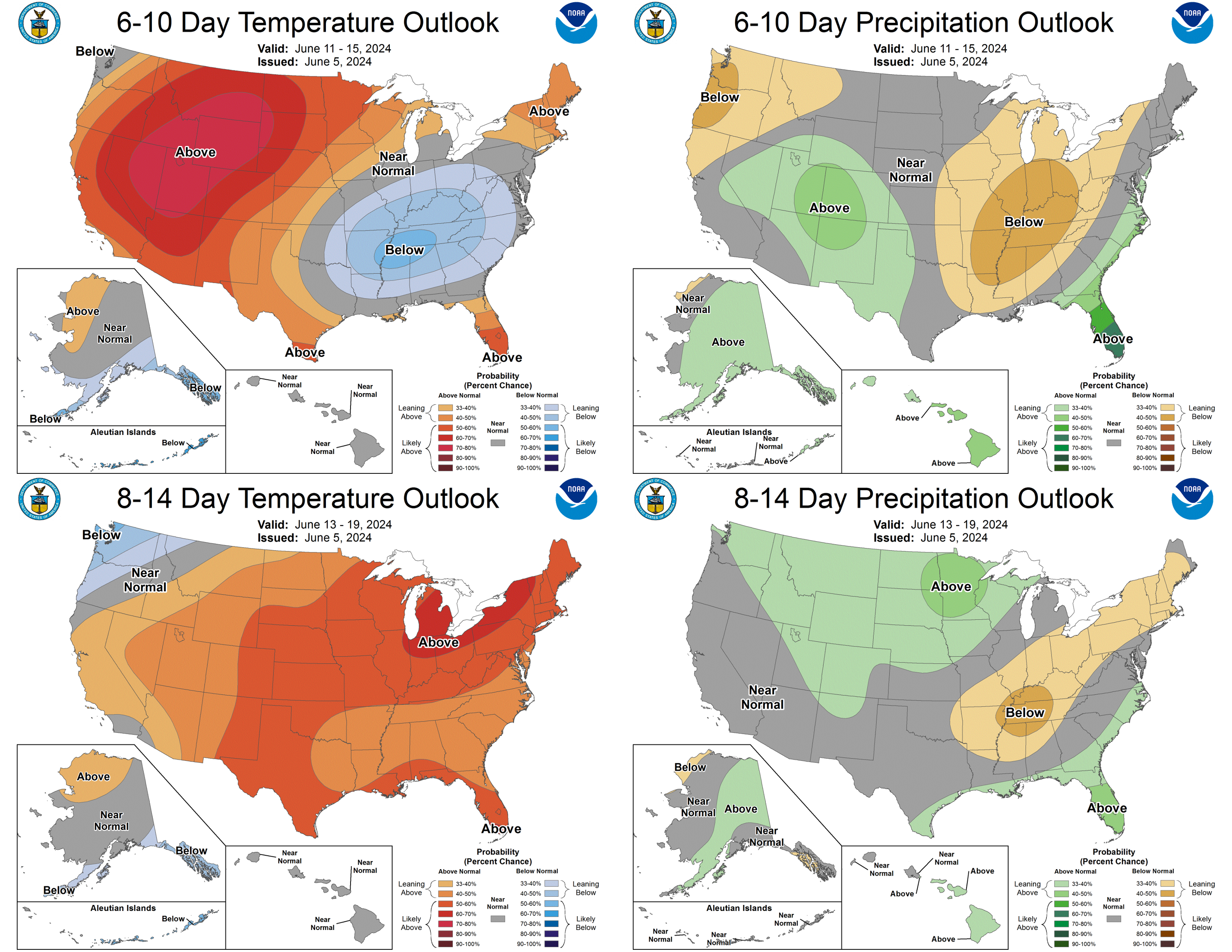
Crops and pests
Soybean and corn planting continued. Soybeans are 79% planted according to the most recent United States Department of Agriculture National Agricultural Statistics Service update, and corn is 86% planted. More than half of both have emerged. While planting nears its end, sidedressed nitrogen has begun to go out on earlier planted corn. Scattered precipitation made it difficult to get across fields, so some preemergent herbicide applications are behind schedule or have missed their ideal window.
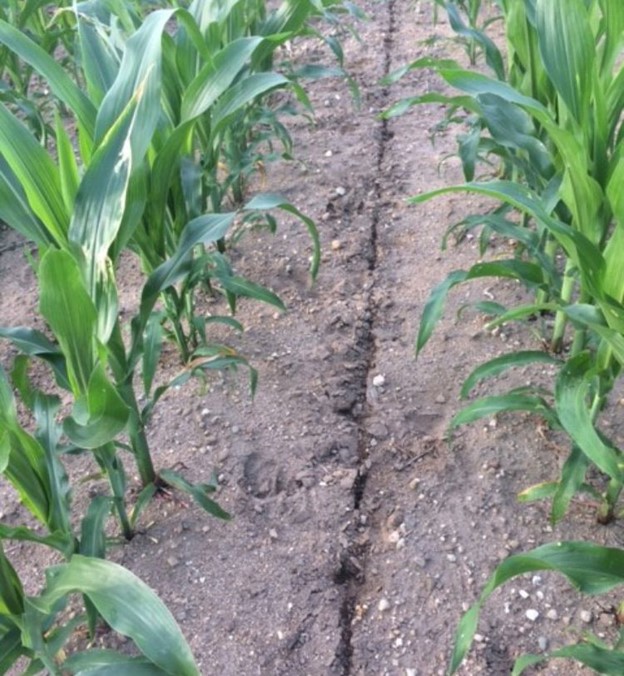
Severe slug damage sustained recently in some no-till fields required replanting. The slugs feed on the cotyledons and especially target open seed furrows. Slug damage in corn can cause defoliation, but a young plant will most likely recover because the growing point is underground. An older plant may sustain damage to the whorl. For more information on slugs in field crops, check out the article Slugs on Field Crops from Kelley Tilmon of the Ohio State University.
Regarding slug treatment options, Chris DiFonzo, the Michigan State University Extension insect specialist, reminds us that “iron phosphate (sold as Sluggo) and metaldehyde (sold as Deadline) both are registered on corn and soybean, but only Sluggo can be used on soybeans in Michigan.” The Deadline label contains a statement restricting use on soybeans, and Michigan and Indiana are not listed on the label. Please document your slug damage with pictures, notes and acreage lost. This documentation could help show if Michigan needs more slug control options.
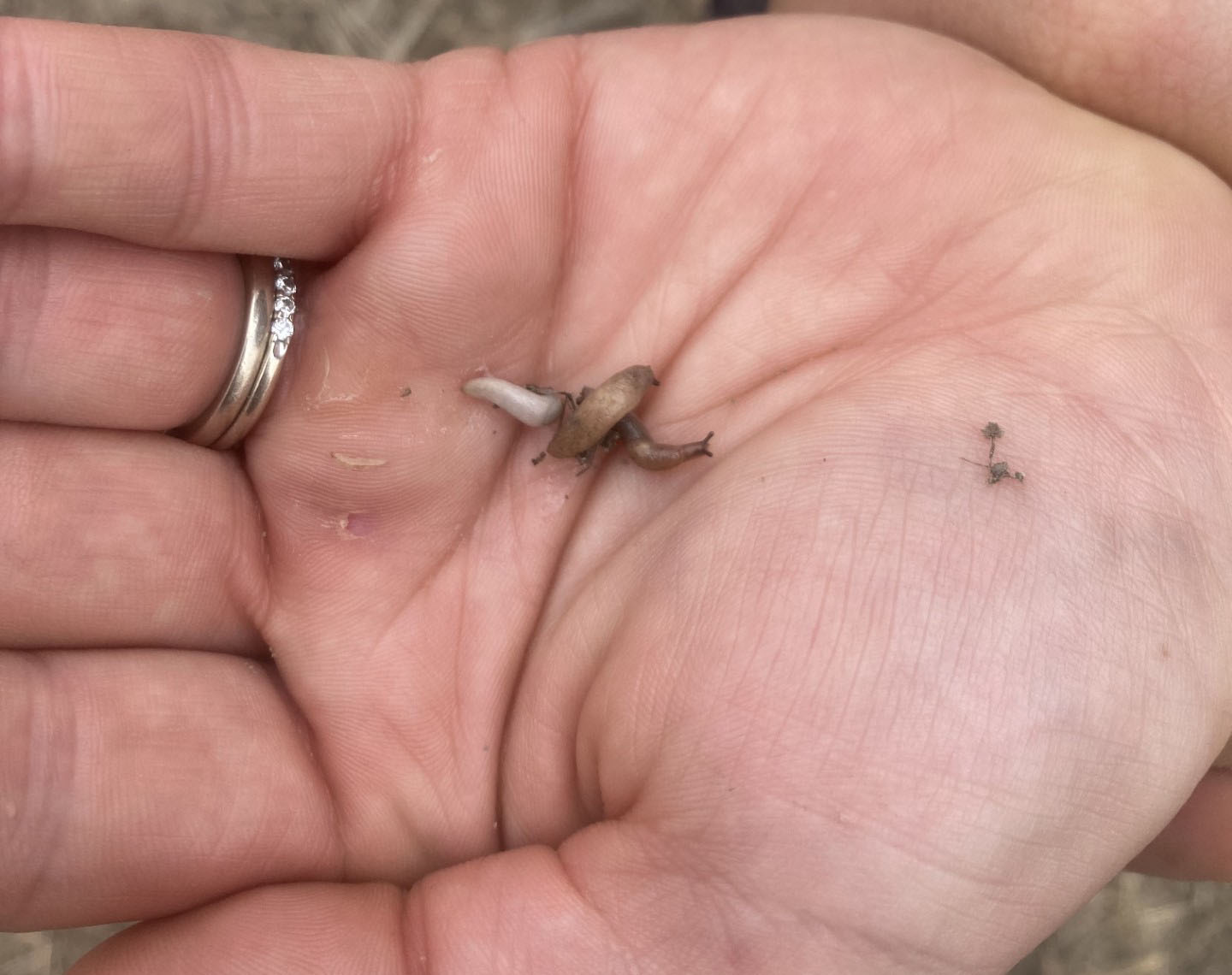
Winter wheat is at Feekes 11.1 and 11.2, meaning that the kernel is continuing to fill. In Feekes 11.2, the kernel begins to accumulate solid matter. Cereal leaf beetle larvae are feeding in some field. The larvae are small and brown to black, and their feeding results in thin gray strips on the leaves. This is particularly damaging if they are feeding on the flag leaf.
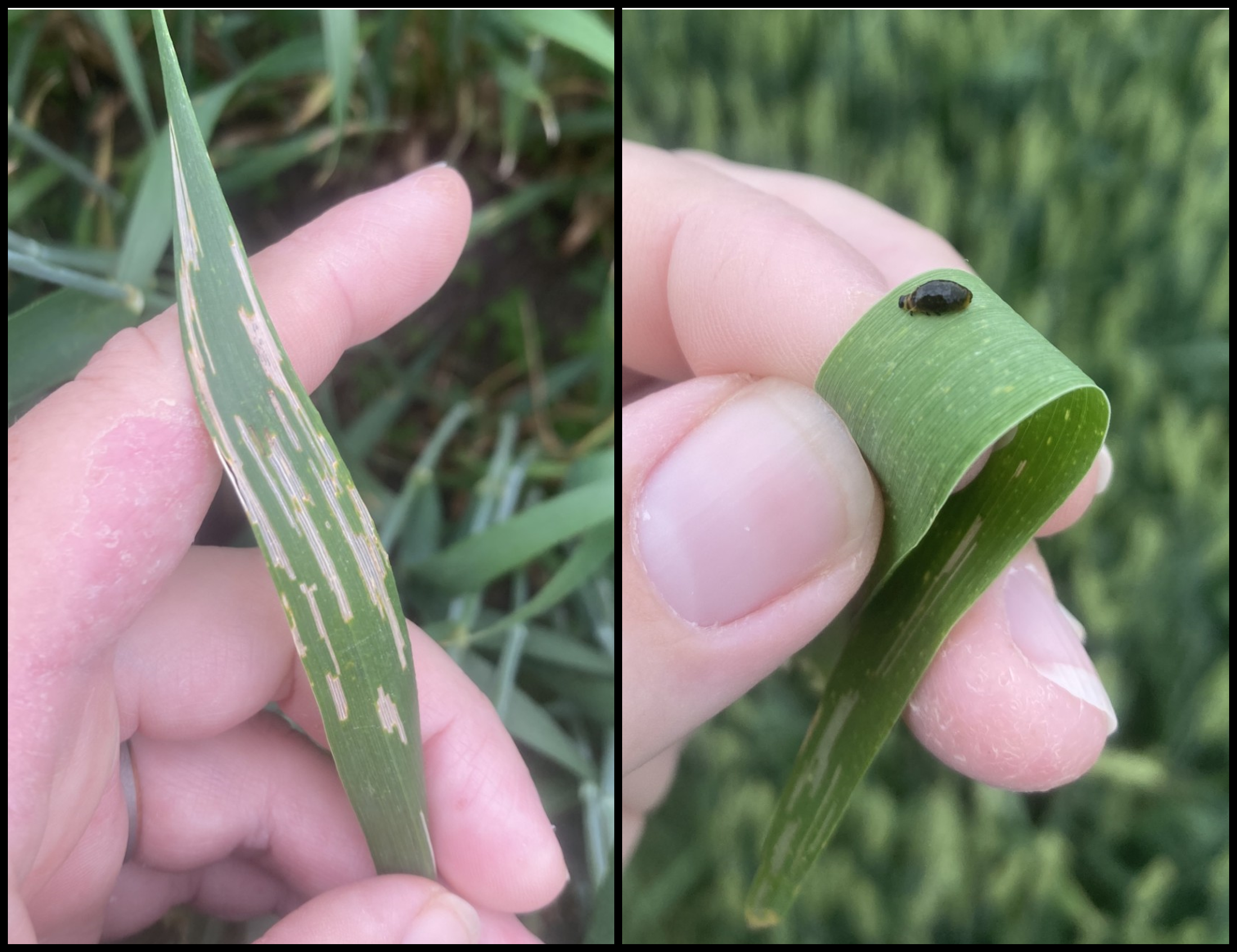
Potatoes continue to progress toward and through flowering and row closure. Colorado potato beetle pressure is higher than normal. Alfalfa regrowth should be scouted for potato leafhopper and alfalfa weevil regularly starting seven to ten days after cutting.
Black cutworm moth flights from this spring are represented below. Although the numbers each week remained relatively low, the pattern shows that fields near Centreville, Michigan, planted around May 6 would be more likely to sustain damage from black cutworm.
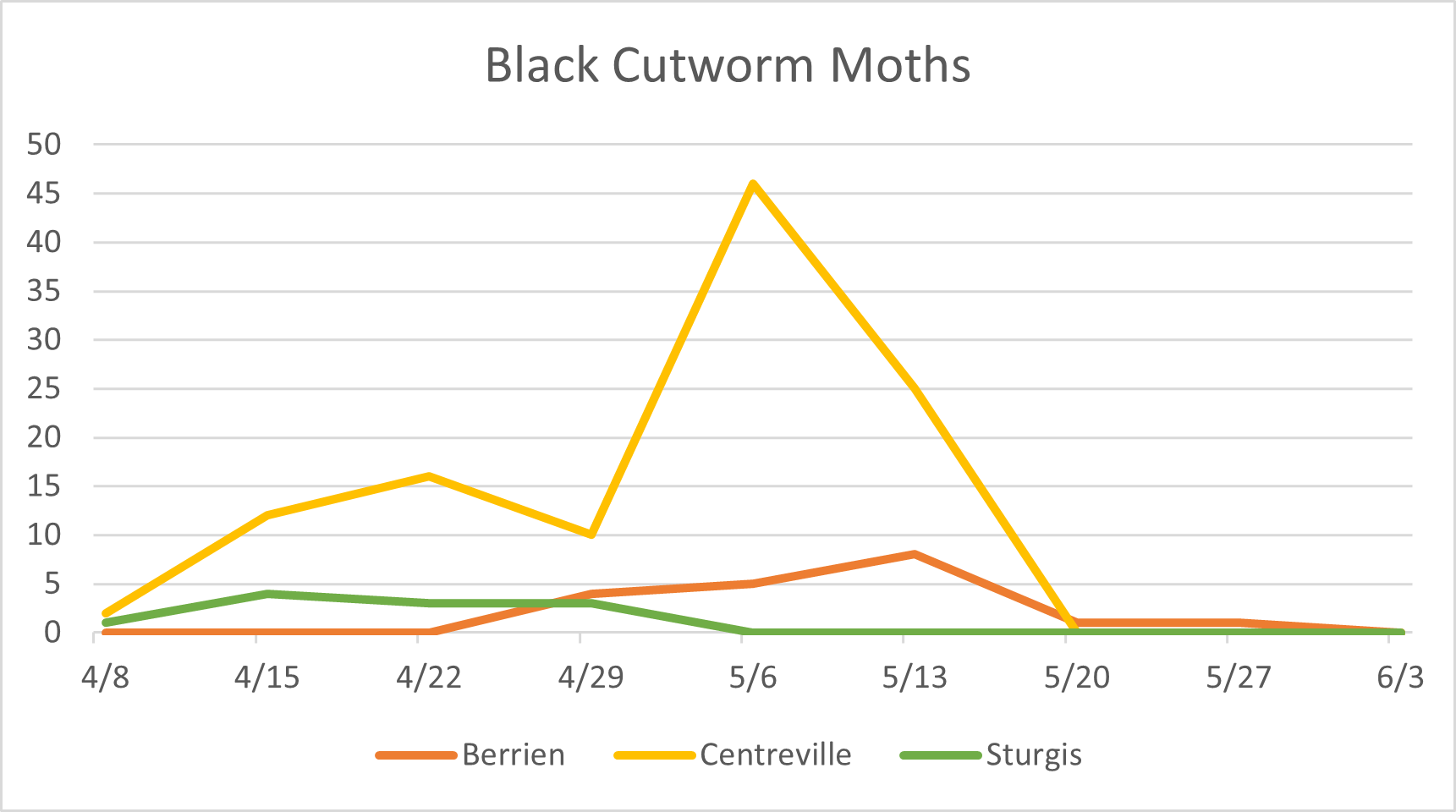
True armyworm moth flights from this spring are represented below. Although the numbers each week remained relatively low, the pattern shows that fields near Sturgis, Michigan, planted around April 29 or May 27 would be more likely to sustain damage from true armyworm.
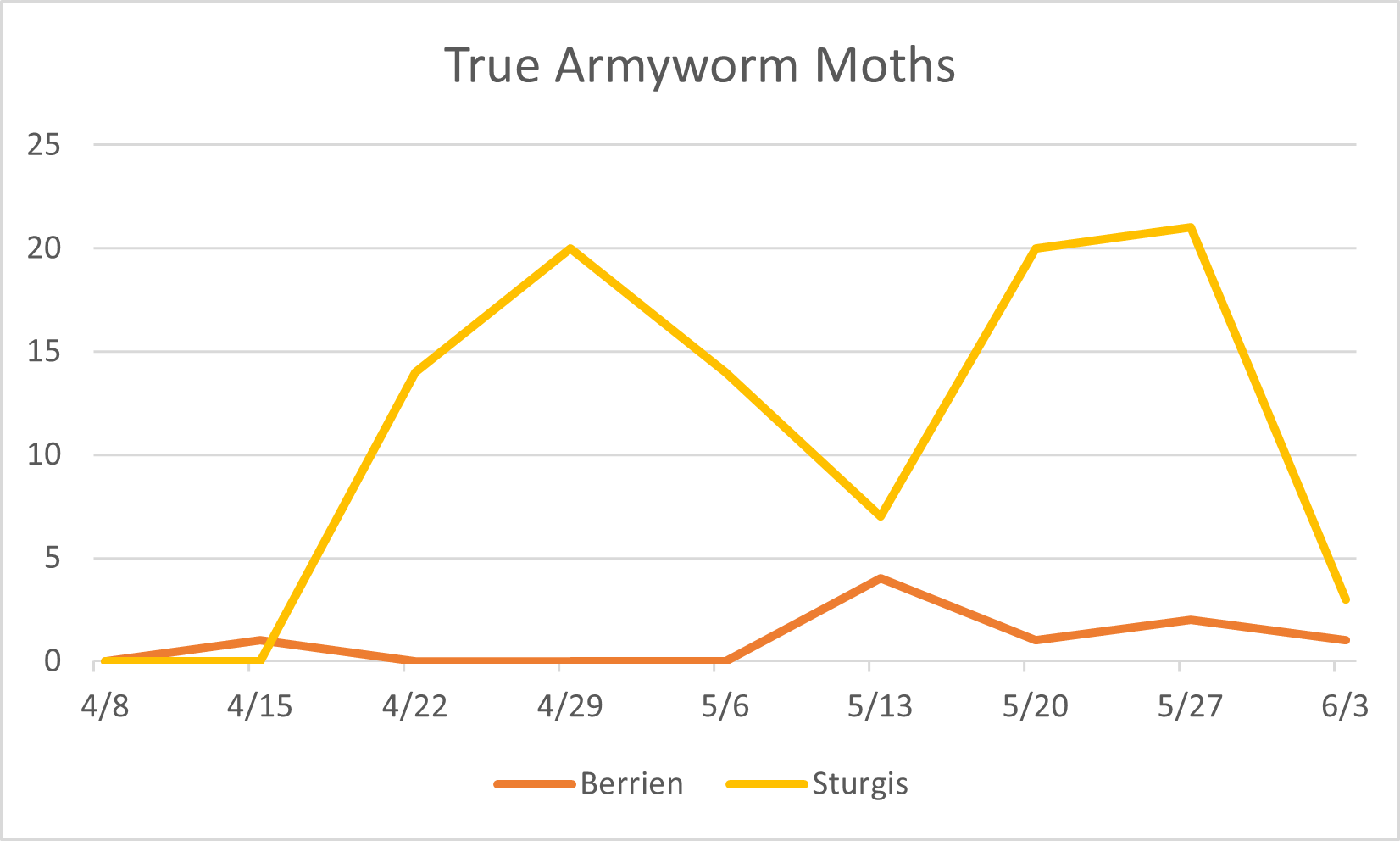
.jpg?language_id=1)
Directed spray applications in corn, presented by Jason Deveau of the Ontario Ministry of Agriculture, Food, and Rural Affairs, was the topic for the Michigan State University Extension Field Crops Virtual Breakfast this week. He shared findings on using Beluga drop hoses in corn applications, which resulted in more uniform coverage. The full findings can be found at the Sprayers 101 website. Recordings of this and all the Virtual Breakfast meetings are closed-captioned and available at the Field Crops Virtual Breakfast webpage and the MSU Extension field crops team social media platforms: Facebook, Spotify, YouTube, Apple Podcasts and Twitter.



 Print
Print Email
Email